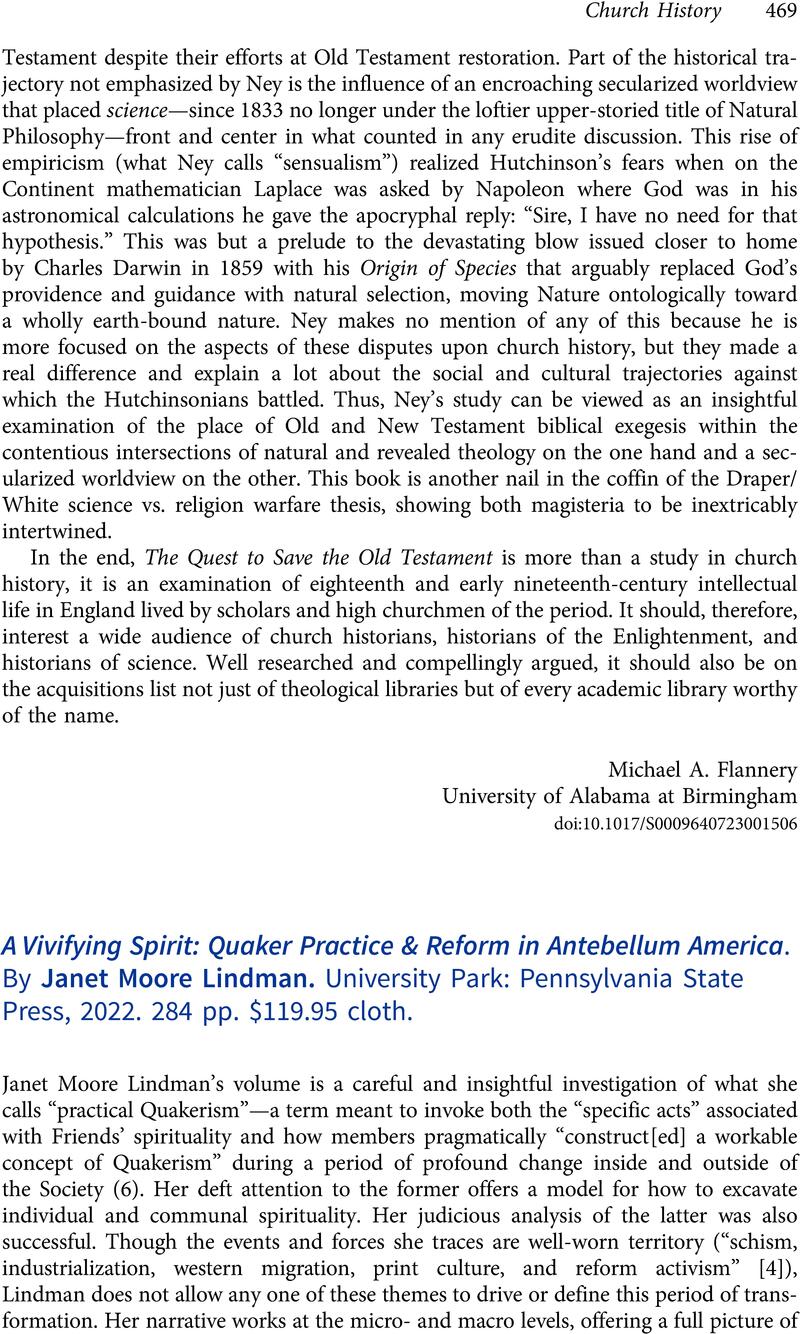No CrossRef data available.
Article contents
A Vivifying Spirit: Quaker Practice & Reform in Antebellum America. By Janet Moore Lindman. University Park: Pennsylvania State Press, 2022. 284 pp. $119.95 cloth.
Review products
A Vivifying Spirit: Quaker Practice & Reform in Antebellum America. By Janet Moore Lindman. University Park: Pennsylvania State Press, 2022. 284 pp. $119.95 cloth.
Published online by Cambridge University Press: 02 October 2023
Abstract
An abstract is not available for this content so a preview has been provided. Please use the Get access link above for information on how to access this content.

- Type
- Book Reviews and Notes
- Information
- Copyright
- Copyright © The Author(s), 2023. Published by Cambridge University Press on behalf of American Society of Church History


